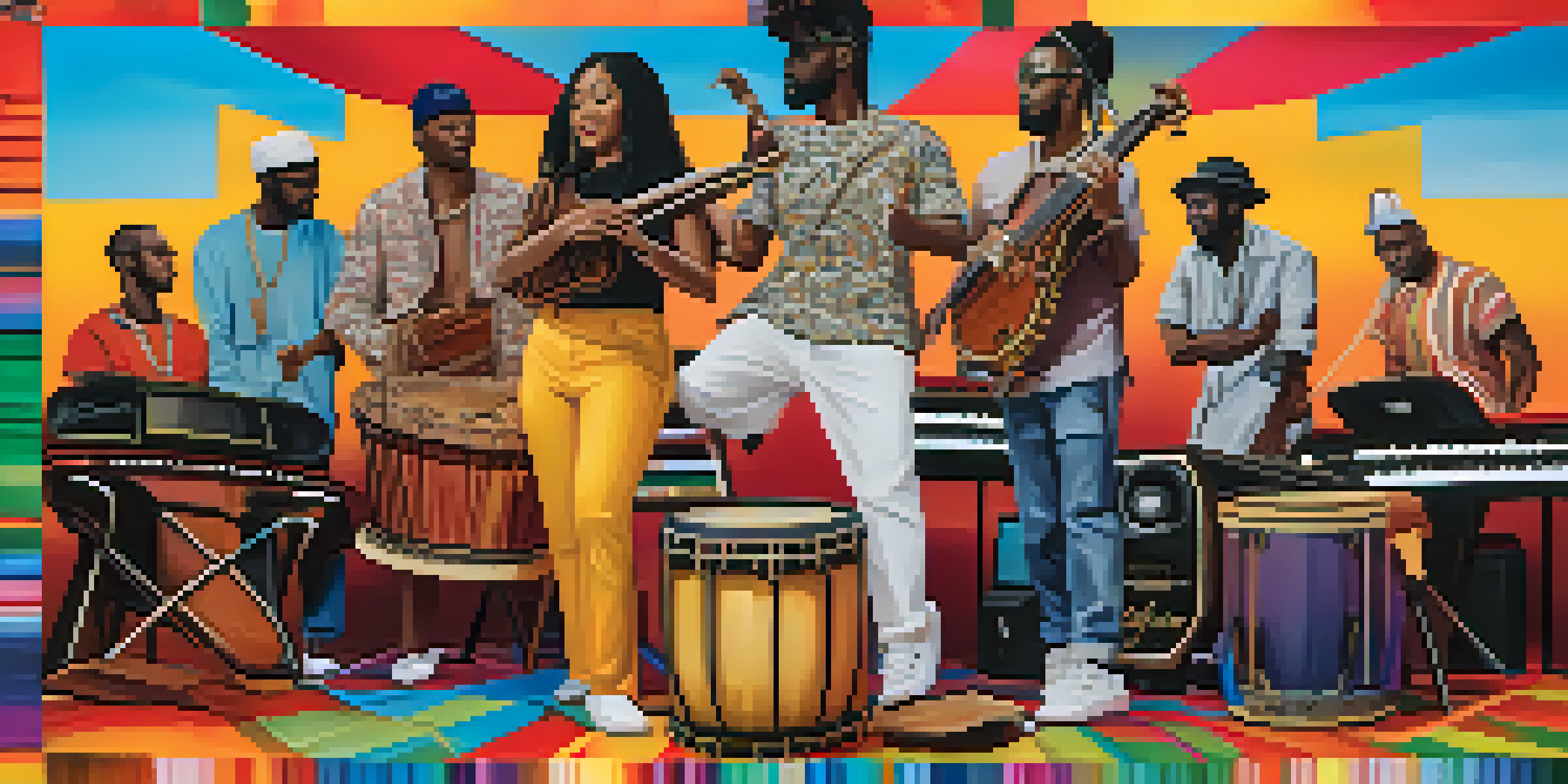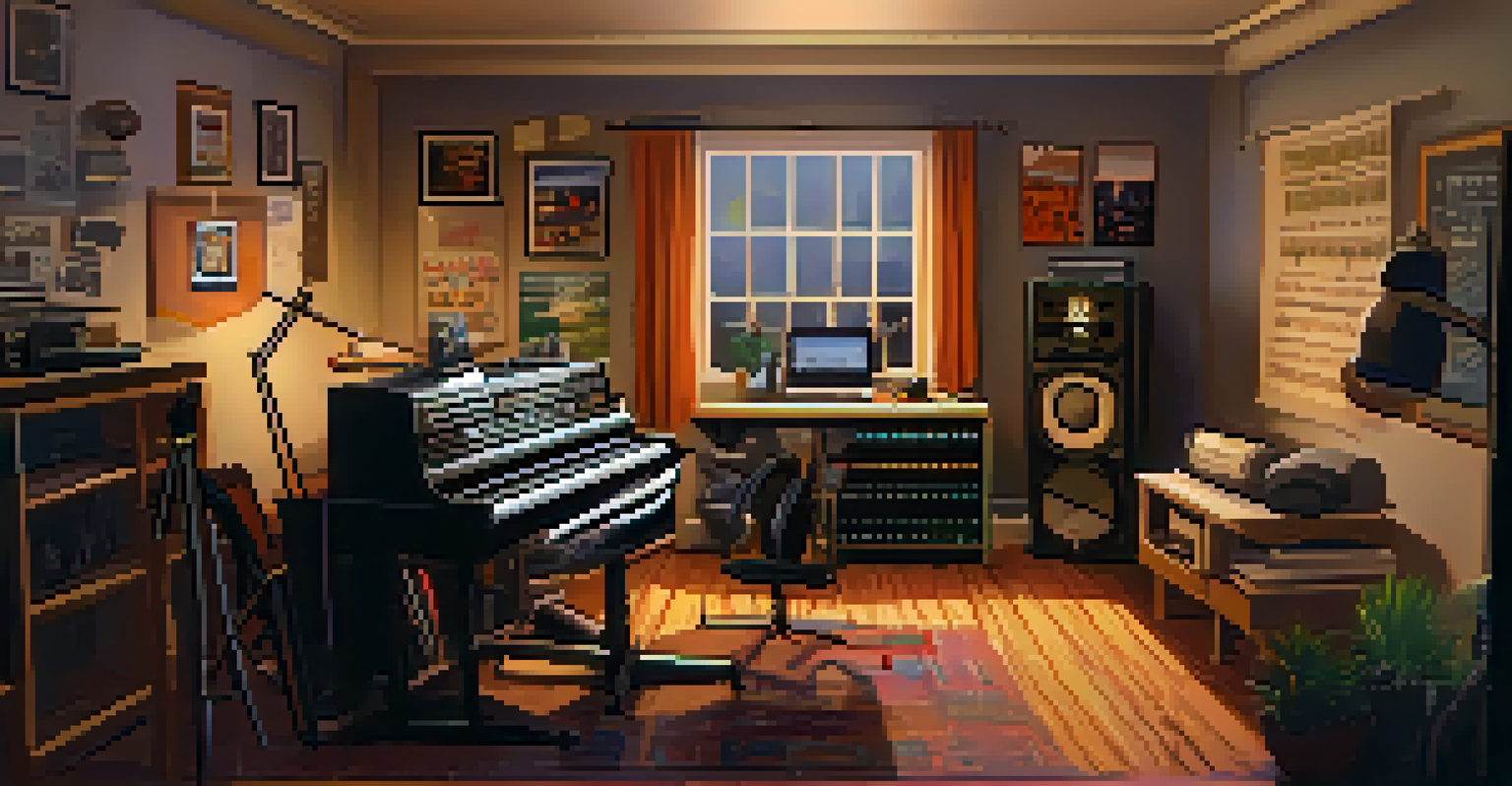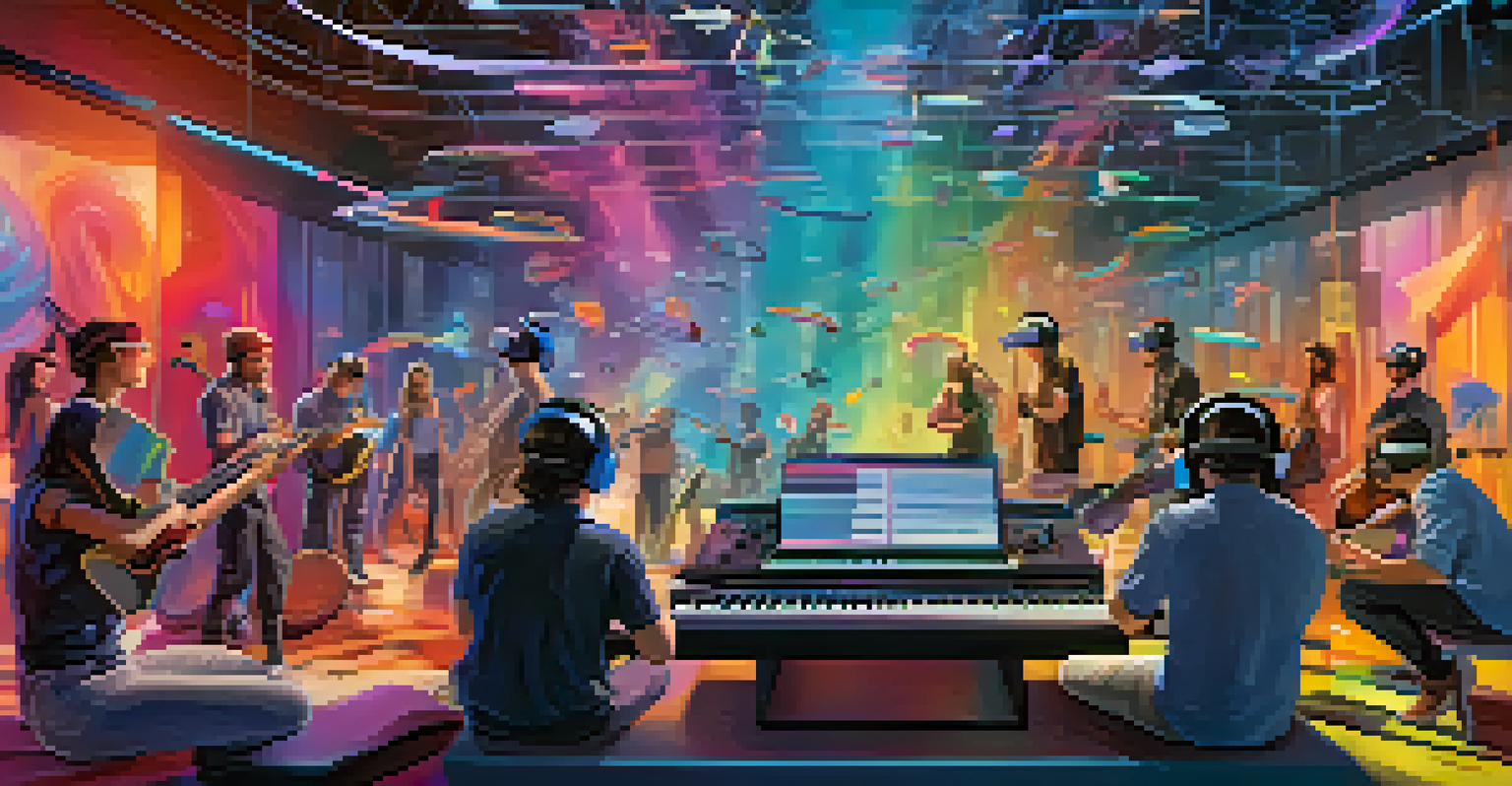How Music Collaboration Platforms are Changing the Game

The Rise of Music Collaboration Platforms
In recent years, music collaboration platforms have surged in popularity, creating a new landscape for artists. These platforms allow musicians from around the globe to connect, share ideas, and create together, regardless of physical distance. This shift has led to a surge in creativity, enabling artists to collaborate in ways that were once unimaginable.
Collaboration is the essence of life. It brings people together, makes ideas grow, and sparks creativity.
For example, a singer in New York can easily work with a producer in London, resulting in a unique fusion of styles. This instant access to diverse talents means that the music being produced today is richer, more varied, and often more innovative. As a result, these platforms are not just tools; they are catalysts for a new wave of musical expression.
Moreover, the ease of use of these platforms has democratized music creation, allowing aspiring musicians to participate in the industry. No longer do you need a big studio or record label to produce quality music; with the right platform, anyone can share their voice and vision.
Breaking Down Geographical Barriers
One of the most significant impacts of music collaboration platforms is the breaking down of geographical barriers. Musicians can now collaborate with others from different countries, cultures, and backgrounds, enriching their creative processes. This global collaboration leads to the emergence of new genres and sounds, which can be heard in today's music charts.

Imagine a hip-hop artist partnering with a traditional African drummer; the result could be a groundbreaking track that merges rhythmic styles and cultural influences. This type of cross-pollination not only broadens the artist's horizons but also introduces audiences to a diverse range of musical traditions.
Music Collaboration Breaks Barriers
Collaboration platforms enable musicians from diverse backgrounds to create new genres and sounds, enriching the global music landscape.
As a result, music becomes a universal language, celebrating diversity and fostering understanding. It’s thrilling to think about how the next chart-topping hit could be a product of a virtual jam session between artists from different parts of the world.
Fostering Community and Collaboration
Music collaboration platforms are more than just tools for creating music; they foster a sense of community among artists. These platforms often feature forums and social features that allow musicians to connect, share feedback, and support one another. This camaraderie can be invaluable, especially for independent artists navigating the industry on their own.
Music is a world within itself; it’s a language we all understand. It’s a universal language that transcends boundaries.
For instance, musicians can join groups based on their genre, share their works-in-progress, and receive constructive criticism from peers. This kind of interaction not only boosts morale but also enhances the quality of the music produced. The community aspect creates a nurturing environment where creativity can flourish.
Additionally, artists can discover potential collaborators who share similar visions and passions. This leads to partnerships that might never have happened without the platform, driving innovation and pushing creative boundaries.
Expanding Access to Resources and Tools
Another game-changing aspect of music collaboration platforms is the access they provide to essential resources and tools. Many platforms come equipped with a variety of software, including virtual instruments and production tools, allowing musicians to create high-quality music without the need for expensive studio time. This accessibility empowers artists to experiment and refine their sound.
For example, a budding producer can use a platform to access professional-grade software that would otherwise be financially out of reach. By leveling the playing field, these platforms enable more artists to bring their creative visions to life. This has led to a burgeoning landscape of independent music that is both innovative and diverse.
Empowering Artists with Resources
These platforms provide essential tools and educational resources, allowing independent musicians to produce high-quality music without expensive studio access.
Moreover, many platforms offer educational resources like tutorials and webinars, helping artists improve their skills. This blend of tools and knowledge fosters a culture of continuous learning, allowing musicians to evolve and adapt to the ever-changing music scene.
Monetizing Collaboration Efforts
As music collaboration platforms continue to evolve, they are also changing how artists monetize their work. Many platforms offer built-in tools for artists to sell their music directly to fans or stream their tracks, creating new revenue streams. This direct-to-fan approach allows musicians to retain more control over their earnings and build stronger relationships with their audience.
For example, an artist can collaborate with a producer on a track and release it on the platform, sharing the profits through a transparent revenue-sharing model. This not only incentivizes collaboration but also ensures that all parties involved are fairly compensated for their contributions. It’s a win-win situation that encourages creativity and innovation.
Additionally, these platforms often provide analytics tools to help artists understand their audience better. By seeing who listens to their music and where, artists can tailor their marketing efforts and even plan tours. This data-driven approach empowers musicians to make informed decisions about their careers.
The Future of Music Collaboration Platforms
Looking ahead, the future of music collaboration platforms appears bright and full of potential. As technology continues to advance, these platforms will likely integrate even more features, making collaboration seamless and intuitive. Innovations like virtual reality (VR) jam sessions could soon become a reality, allowing artists to collaborate in immersive environments.
Furthermore, the rise of artificial intelligence (AI) in music production could revolutionize the way artists create and collaborate. Imagine AI tools that suggest chord progressions or even help generate lyrics based on an artist's style. This could enable musicians to focus more on their creativity while streamlining the production process.
Global Collaboration Enhances Creativity
Music collaboration platforms break geographical barriers, enabling artists to fuse diverse styles and create innovative music.
Ultimately, the evolution of these platforms will continue to shape the music industry, making collaboration more accessible and diverse. As new artists emerge and traditional boundaries dissolve, we can expect a vibrant musical landscape that reflects the voices and stories of our global community.
Real Stories: Artists Thriving Through Collaboration
To truly appreciate the impact of music collaboration platforms, it’s essential to highlight real stories of artists who have thrived through these tools. Take the indie singer-songwriter who found a producer halfway across the world, resulting in a hit single that catapulted her career. Their collaboration, facilitated through a platform, showcases how technology can bridge gaps and create opportunities.
Another inspiring example is a band that used a collaboration platform to bring together musicians from various backgrounds for a unique project. The resulting album not only gained critical acclaim but also sparked conversations about cultural exchange in music. These stories illustrate the tangible benefits of collaboration in today’s music scene.

These success stories remind us that behind every song is a network of creatives working together. By leveraging the power of collaboration platforms, artists are not just creating music; they are building communities and sharing their unique narratives with the world.